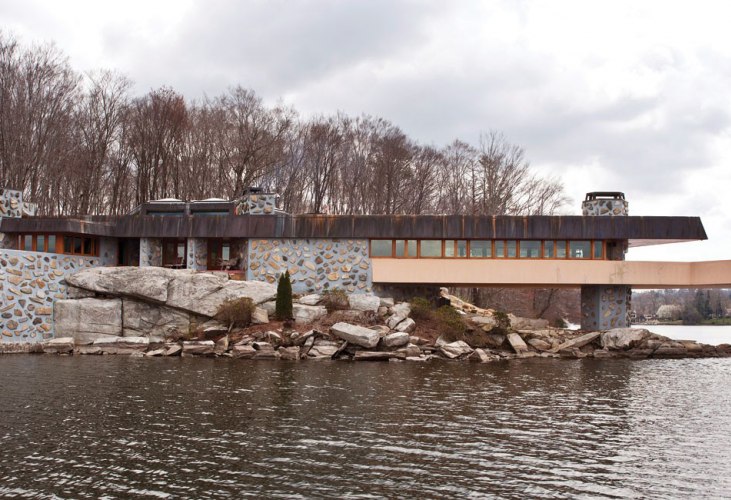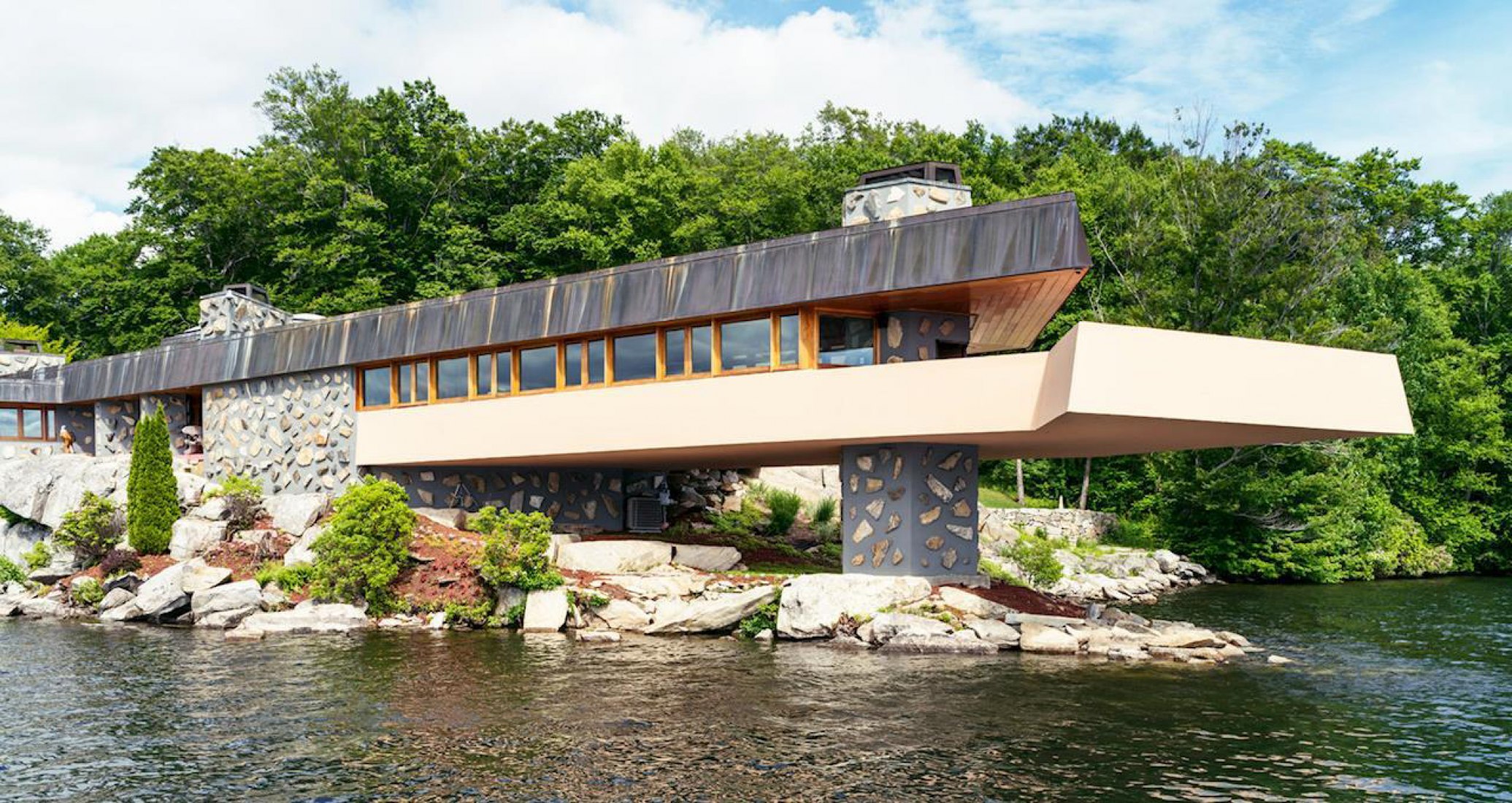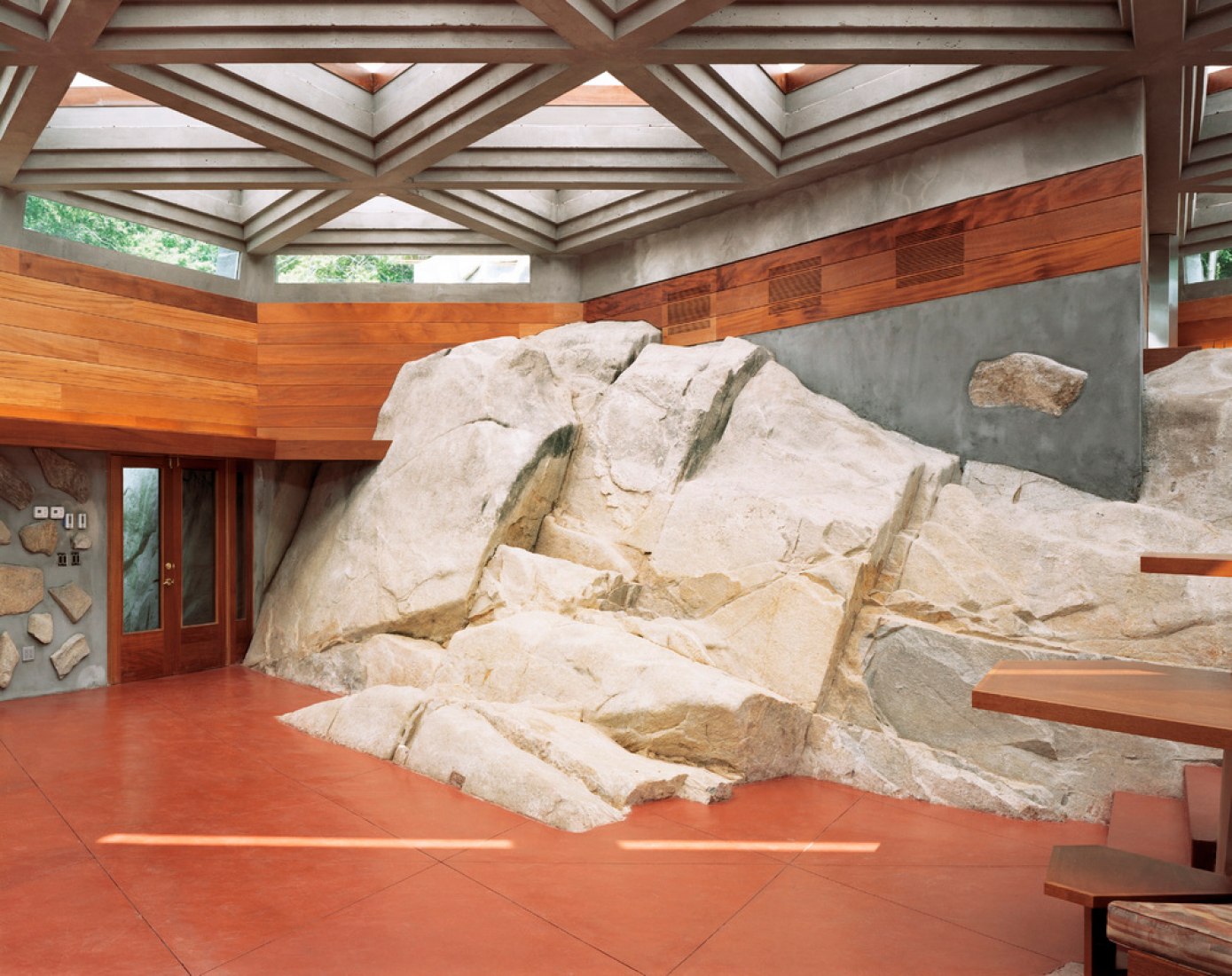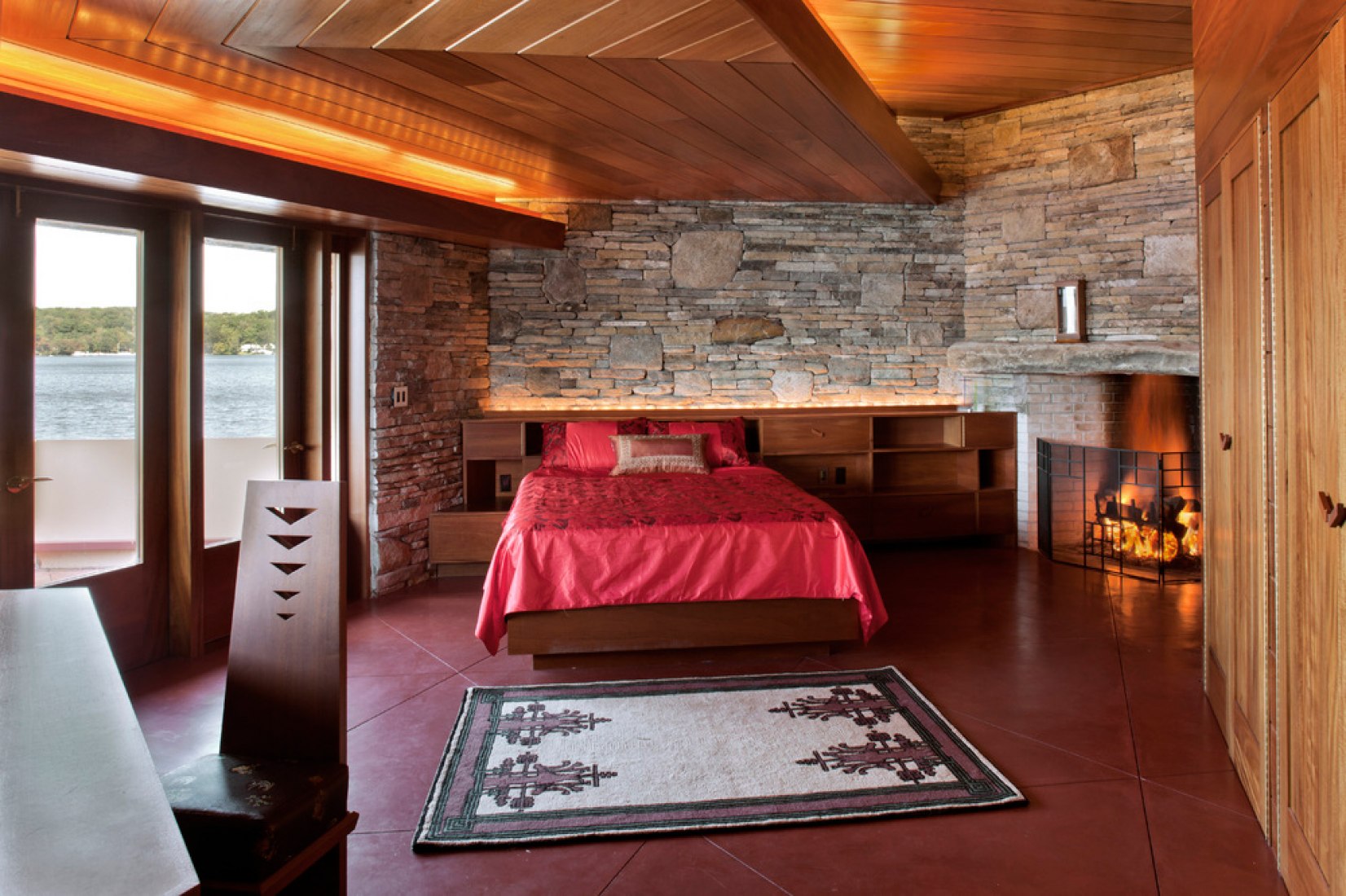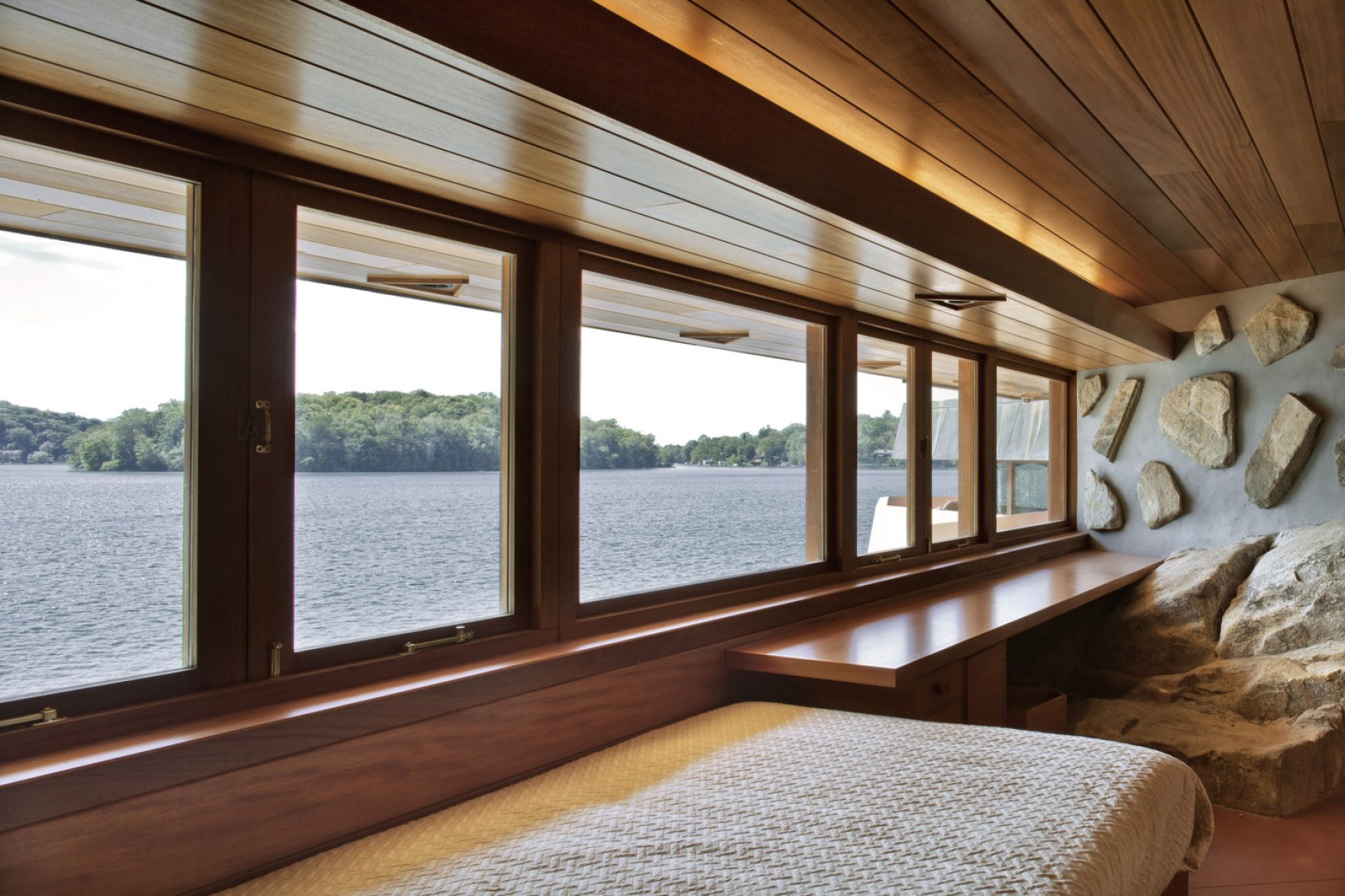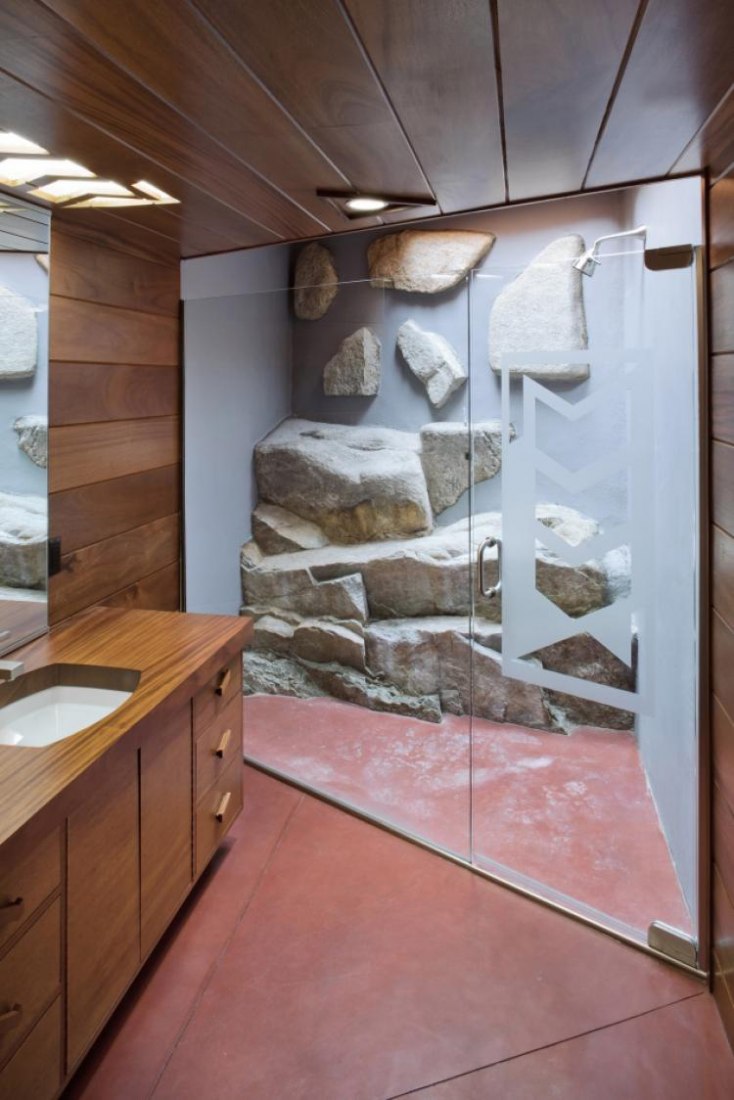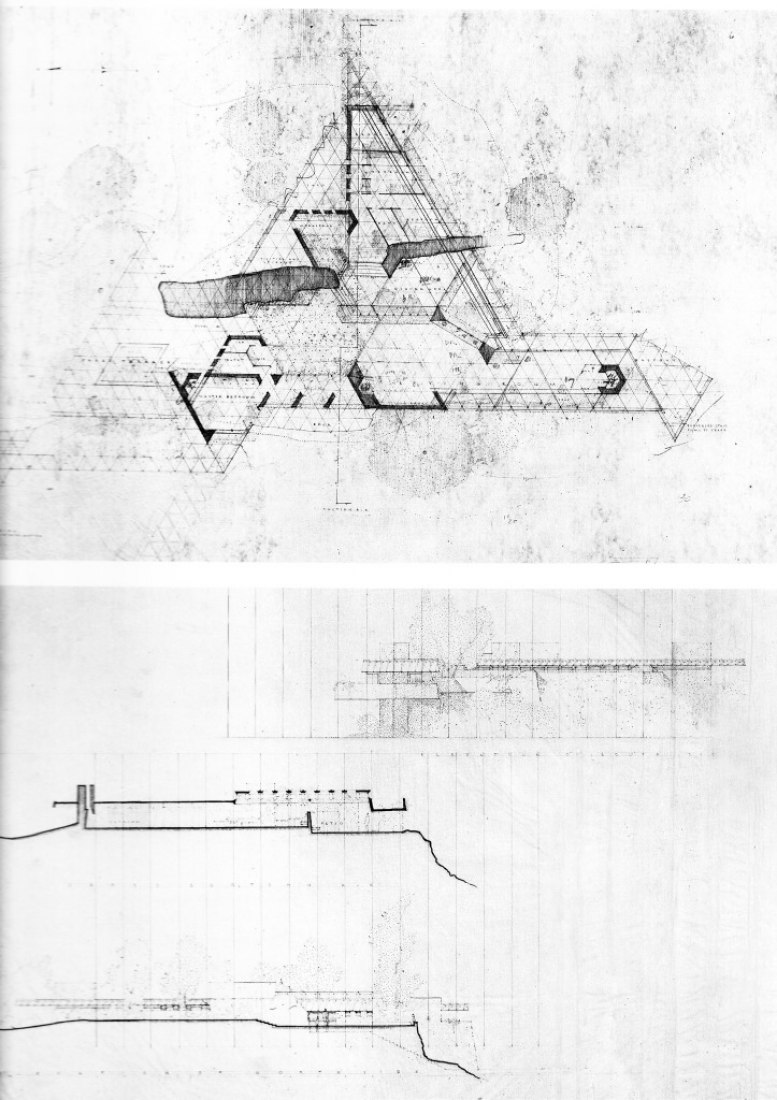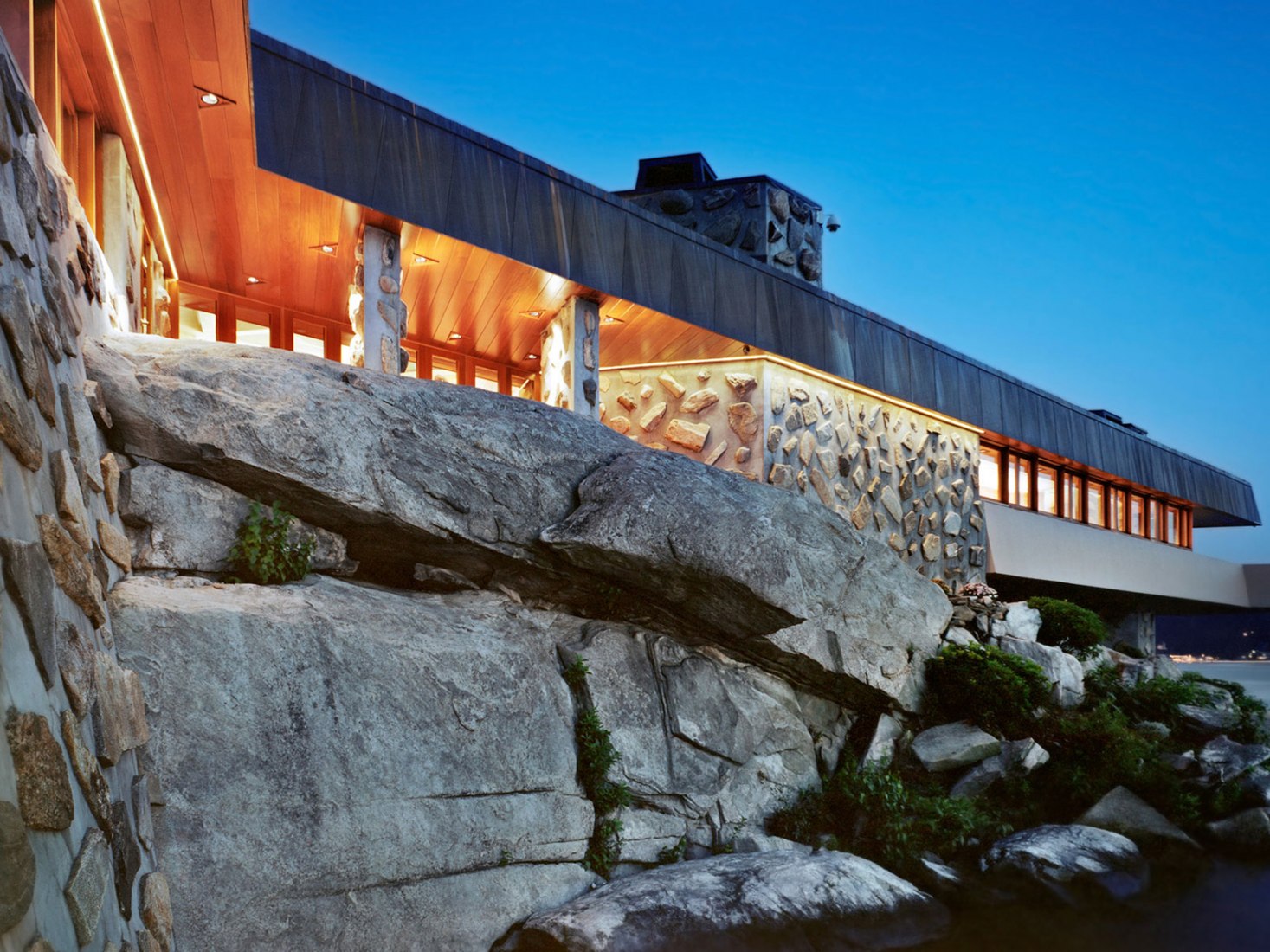In the 1950s, Lake Mahopac was a middle-class summer community, convenient to New York. At age 83, Wright, a lifelong Midwesterner, was basking in the chatter of Manhattan success, buoyed by the fame surrounding his commission for the Solomon R. Guggenheim Museum.
The rocky 11 acres of heart-shaped Petra Island inspired Wright precisely when he could most afford to be choosy. After decades of emotional and financial turbulence, Wright’s life finally seemed balanced. Many believe the prolific artist and educator was peaking creatively.
An engineer named A.K. Chahroudi commissioned Wright to design a dramatic cantilevered cliff residence envisioned to surpass Fallingwater (1935) as his crowning achievement. The guest cottage was merely the companion structure. Allegedly due to lack of funds, Chahroudi never built the great house, and eventually sold Petra Island, but copies of the drawings remained in the engineer’s family.
According to Massaro, Chahroudi’s widow confided that her husband “never intended to build the big house.” But the client challenge of creating—for an engineer!—a higher-tech masterpiece in Wright’s signature “late organic style” was the only way to court the notoriously fussy genius into drafting the stunning, smallish cottage, built in 1952.
One summer afternoon in the late 90s, Massaro received an urgent telephone call from his wife. “She said, hon, there’s a man trying to rent a boat from Mahopac Marina to get onto the island!,’” says Massaro. Barbara quickly nixed that. “She’s very private, very protective,” he says.
A week later, the thwarted boat renter contacted Massaro directly, identifying himself as Thomas A. Heinz, an architect from Illinois and author of many books on “Mr. Wright.” Heinz explained that he’d photographed every existing Wright house except the Chahroudi cottage. Heinz politely asked Massaro to grant him the privilege of a tour. Massaro agreed. The men became friends. When the rift with the foundation blew up, Massaro immediately hired Heinz to execute Wright’s plans and be the architect of record for its construction.
All that survived of the original Chahroudi commission were five Wright drawings, including a floor plan with ideas for built-in and stand-alone furniture, a building section, and three elevations. Massaro hired Thomas A. Heinz, an architect and Wright historian expert, to complete the unfinished design.
Heinz employed 3D CAD/CAM computer software to model aspects of Wright’s design not self-evident in the original renderings. His design also provided updated heating and cooling solutions that were not part of the original Wright concept, such as air conditioning and radiant heating. It was also determined to add chimney caps, which Wright characteristically demurred, for the home’s six fireplaces.
In common with Fallingwater, the house’s design does not merely accommodate but actually incorporates the island’s topography. A 3.7 m-high, 18 m-long rock forms the exterior to the entry and an interior wall, while a smaller rock doubles as a kitchen and bathroom wall. Again, like Fallingwater’s signature terraces, the house features a cantilevered deck that stretches 7.6 m over Lake Mahopac. Its 5.5 m-high living area is illuminated with 26 triangular skylights.
Throughout the construction, Massaro was in conflict with the Frank Lloyd Wright Foundation, which was established by the architect in 1940 to conserve his intellectual property. Massaro told interviewers that the foundation requested $450,000 to render working drawings from Wright’s sketches and supervise construction of the house. After Massaro hired Heinz, the foundation filed a lawsuit, which ended in a settlement that limited Massaro to referring to the structure as being “inspired by Frank Lloyd Wright”.
In 2013 it was rumored that Angelina Jolie wanted to give the island to her then-husband Brad Pitt for his 50th birthday. It is well known that the actor is a fan of architecture and Frank Lloyd Wright in particular. A few weeks ago, after the announcement of their divorce it was announced that housing should decide who would stay. But the sale never took effect and Massaro continues renting housing for social events.

